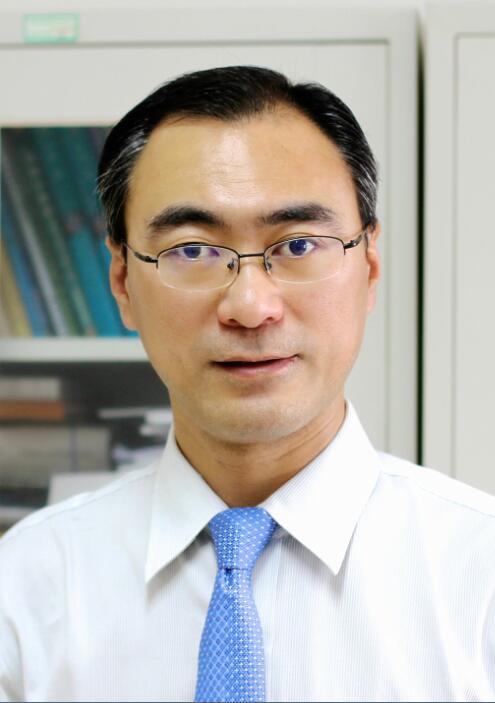|
|
|
 Professor Professor |
Name: |
Xin Yu |
Highest Education: |
Ph.D |
Office: |
1799 Jimei Road, Xiamen |
Zip Code: |
361021 |
Phone: |
+86-592-6190780 |
Email: |
xyu@iue.ac.cn |
|

|
| Education and Appointments: |
Jul. 1996, B.S. in Environmental Biology, Nanjing University, China
Jul. 1999, M.S. in Environmental Science, Chengdu Institute of Biology, Chinese Academy of Sciences
Jan. 2003, Ph.D. in Municipal Engineering, Tsinghua University, China After graduation from Tsinghua University, Dr. Yu returned to School of the Environment, Nanjing University as a faculty member. From 2005,he worked as a visiting scholar and postdoc fellow in Michigan State University (U.S.) and University of Waterloo (Canada), respectively. From 2008 onwards, he joined Institute of Urban Environment, Chinese Academy of Sciences as a professor, member of hundred talents programme. |
| Main academic contributions: |
| |
| Research Interest: |
Biological and advanced treatment of drinking water, principles of drinking water safety, health-related microbiology and molecular ecology of water environment and water treatment |
| Selected Publications: |
[1] Wenfang Lin, Shuai Li, Shuting Zhang, Xin Yu* (2016) Reduction in horizontal transfer of conjugative plasmid by UV irradiation and low-level chlorination. Water Research, 91: 331-338
[2] Shenghua Zhang, Chengsong Ye, Huirong Lin, Lu Lv, Xin Yu. (2015) UV disinfection induces a VBNC state in Escherichia coli and Pseudomonas aeruginosa. Environmental Science and Technology, 49, 1721-1728
[3] Lu Lv, Xin Yu*, Qian Xu, Chengsong Ye. (2015) Induction of bacterial antibiotic resistance by mutagenic halogenated nitrogenous disinfection byproducts. Environmental Pollution, 205: 291-298
[4] Huining Zhang, Kefeng Zhang, Huixia Jin, Li Gu, Xin Yu*. (2015) Variations in dissolved organic nitrogen concentration in biofilters with different media during drinking water treatment. Chemosphere,139:652-658
[5] Lu Lv, Tao Jiang, Shenghua Zhang, and Xin Yu*. (2014) Exposure to Mutagenic Disinfection Byproducts Leads to Increase of Antibiotic Resistance in Pseudomonas aeruginosa. Environmental Science and Technology, 48:8188-8195
[6] Ying Zhang, Xin Yu*, Zhuoying Wu, Zihong Fan, Song Gong, Huirong Lin. (2014) Antibiofilm activity of Bacillus pumilus SW9 against biofouling on microfiltration membrane. Applied Microbiology and Biotechnology, 98: 1309-1320
[7] Hamid Mohammad Al-Gabr, Tianling Zheng*, Xin Yu*. (2013) Inactivation of Aspergillus flavus in drinking water after treatment with UV irradiation followed by chlorination. Science of the total environment,463:525-529
[8] Zhuoying Wu, Chengsong Ye, Feng Guo, Shenghua Zhang, Xin Yu*.(2013) Evidence for Broad-Spectrum Biofilm Inhibition by the Bacterium Bacillus sp. Strain SW9. Applied and Environmental Microbiology, 79(5):1735-1738
[9] Bing Liu, Li Gu, Xin Yu*, Guozhong Yu, Huining Zhang and Jinli Xu. (2012)DON profile during backwashing cycle of drinking water biofilter. Science of the Total Environment, 414:508-514
[10] Feng Guo, Shenghua Zhang, Xin Yu*, Bo Wei. (2011)Variations of both bacterial community and extracellular polymers from aerobic biofloc to granule: The inducement of increase of cell hydrophobicity. Bioresource Technology,102:6421-6428 |
| Supported Projects: |
1. Behavior of typical emerging waterborne pathogens in the biofilms in drinking water treatment plant and distribution pipelines, supported by Knowledge Innovation Program of the Chinese Academy of Sciences (2010.01-2012.12)
2 .Biological Safety and its control technology of urban drinking water, supported by Hundred Talents Programme of Chinese Academy of Sciences (2009.01-2011.12)
3. Control of biofilm in drinking water distribution system based on bacterial cell-to-cell interactions, supported by Fujian Provincial Natural Science Foundation for Distinguished Young Scholars (2009.05-2012.05) |
|
|
|